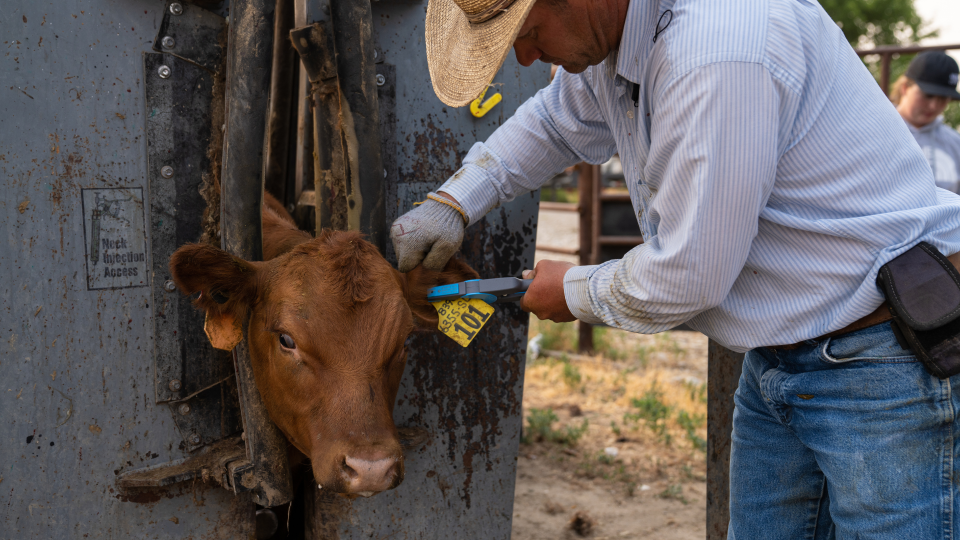Tagging practices for proper retention, readability
Ear tagging is common practice, but there are steps to make the process effective, plus easier on the animal and the caregiver.
“Foremost, make sure the tag will fit your needs,” according to ALLFLEX ID Specialist, Dave McElhaney. Speaking at a WIRED event, McElhaney told the ranch women in attendance, “Make sure the tag is the correct size and make sure you have enough room on that tag to include all the information you need.”
WIRED stands for Women in Ranching Education and Development, and it offers women hands-on training including vaccination, implanting, ear tagging, and proper animal handling and chute procedures. In addition, participants are trained in Beef Quality Assurance (BQA) and can become BQA certified.

McElhaney encouraged participants to use the correct applicator with the correct tags. “If you’re using ALLFLEX® tags, use an ALLFLEX applicator,” he said, “because it’s designed exactly for that brand of tags.” Check the applicator to ensure it’s in good working order, the pin isn’t bent and nothing is broken.
Lightweight, ergonomic applicators are available and more comfortable to use.
Place two-piece bangle tags in the middle third of the ear between the second and third rib. “That brings the panel tag out from the ear hair and makes it visible.” If you’re adding an electronic EID tag, put it about an inch away from the panel tag in the inner third of the ear, he said. EID tags allow for digital recording and lifetime traceability of animals.
Keep it clean and safe
Don’t forget the disinfectant, McElhaney stressed. “It’s a simple thing that can improve retention and healing by eliminating bacteria that can cause an infection. Just load the tag on the applicator and dip it in disinfectant before putting the tag in the ear.”
Of course, properly restraining the animal helps the tagging process go more smoothly and safely.
If tagging calves, keep them away from the cow to prevent the mother interfering with the process. Consider using calf crates to help with the process. Gently position the calf’s head to allow access to the ears. Often the best way is to position the head between your legs, facing your head in the same direction as the calf’s. If tagging older animals, restrain them in a chute.
After tagging
Watch for any signs of infection or irritation for several days following tagging. In the unlikely event of an infection, remove the tag and consult your veterinarian for treatment advice. Make sure the infection has cleared before reapplying the tag.
Taking extra care during ear tagging benefits both the caregiver and the animal, and helps ensure quick, effective identification is in place to support your operation’s identification and traceability needs.
Find more content for your beef operation.
